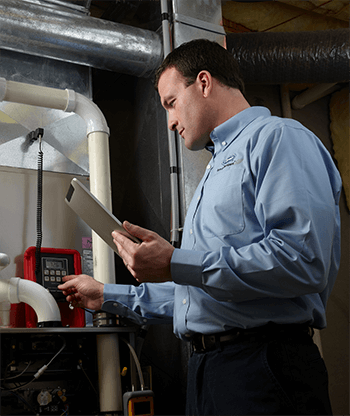Avoid These Four Typical Heating System Mistakes As Cold Weather Is BackPosted by Bird on March 24th, 2021
According to the Weather Network, these last couple of weeks of moderate temperatures have been what they like to call an "abnormality." Winter is winging its method back to Canada once again, boosted by inbound arctic winds and bringing what professionals call "listed below seasonal" temperatures along with rain, sleet, snow and the rest of the normal suspects. Enjoyable, right? Together with freezing weather, winter season typically brings unique difficulties for the household thermostat. These timely pointers will help you sidestep some of the most typical heating errors. How a Thermostat Works. For many months of the year, you don't touch your thermostat for heating purposes. However then winter season shows up, in-home temperature levels chill, and the first thing you consider is your thermostat. When you are in an extremely small, enclosed space such as an automobile, it's easy to presume that the heat dial works almost quickly, like the average automobile accelerator. Press a button, turn it on high, and PRESTO! Heat floods the area and you feel warm immediately! According to the Telegraph, as much as 35 percent of homeowners admit to taking the very same approach when heating their home. Simply set the thermostat up higher so the area will heat up quicker. However there's an issue with this approach: Your thermostat can't adjust how fast it heats up an area, despite the size of the area. It can only guarantee that, in its slow and consistent method, it ultimately hits the mark in regards to your initial temperature demand. As soon as you change the thermostat setting, your thermostat must:. - Sense the current ambient air temperature level. - Calculate what needs to change to satisfy your new air temperature level demand. Then it informs the heater to:. - Get to work heating up the air. - Send out the warmed air to every part of your area as uniformly as possible. Whether you set your thermostat to the exact temperature you prefer or 5 degrees greater, your air will still be warmed at the same speed. But when you set it for a greater heat level than is really comfortable, by the time it hits the mark, you will be roasting and you will go to turn it right pull back once again, losing cash as well as comfort while doing so. 4 Common Heating Mistakes You Don't Desire to Make. These four typical heating errors will end up costing you cash and putting more tension on your already hard-working heating unit. Mistake 1: Letting your home get too cold in the evening. Temperature extremes are not your thermostat's good friend. Yes, you can potentially save some pennies by turning your thermostat way down during the night while everybody is asleep. However then what takes place when you wake up? It's freezing! So you crank the thermostat and your heating system starts working away-- method harder than is perfect-- attempting to warm your space back up again. What to do instead: Go for 1 or 2 degrees lower at night. This will still assist you conserve money, plus it will not cost you later on in wear-and-tear heating unit repairs triggered by overwork. You can also program your thermostat to begin heating up to your favored day-time temperature about a half-hour prior to you have to get up. Mistake 2: Asking your heating unit to do more than it can. When the outdoors temperature level reaches extreme lows, this can put undue tension on your heating unit. This is because, in most cases, certain kinds of heating unit are designed to heat effectively just when the outside air stays above no degrees. Some more recent high-efficiency heating unit do a better job of this, but in general, if you discover you keep changing your thermostat to reach higher temperatures and nothing in fact alters, this might either indicate a repair work is required or it might just imply your heating unit is already doing all it can to keep you warm in severe cold weather. Mistake 3: Leaving the heat on all the time. If you do not have a programmable thermostat and you have an old-school heater that will not take an after-market add-on, you might have no option but to keep the heat on continuously or run the risk of coming house to a freezing house. But if you have a programmable thermostat or a system that can take one, it will cost you more to leave the heating unit running continuously than to shut it off and turn it on strategically. In reality, a programmable thermostat's job is to turn your heating system on or off as needed to maintain temperature consistency according to your needs. It can take some trial and mistake to find out a programming schedule that is comfy and affordable, once you do, the durations when your heating unit is not running will provide it some much-needed R&R, and when it does run, you can know it is helping to manage your energy costs by preserving temperature furnaces calgary level consistency. Error 4: Not sealing air leaks and unused areas throughout heater season. When temperatures plunge, it is time to get major about keeping the warm air in and the cold air out. Sealing up air leakages (close and lock all windows and doors, weatherstrip and spot as required) can ensure warm air isn't sneaking out into the cold. And sealing unused areas (closing air vents, adjusting thermostats for zoning) can ensure that warm air is utilized specifically to heat your real home. Contact Regional A/C Specialist. If you're trying to find more assistance, contact your regional A/C business for assist with HEATING AND COOLING and heating system assessments and upkeep. Like it? Share it! |



